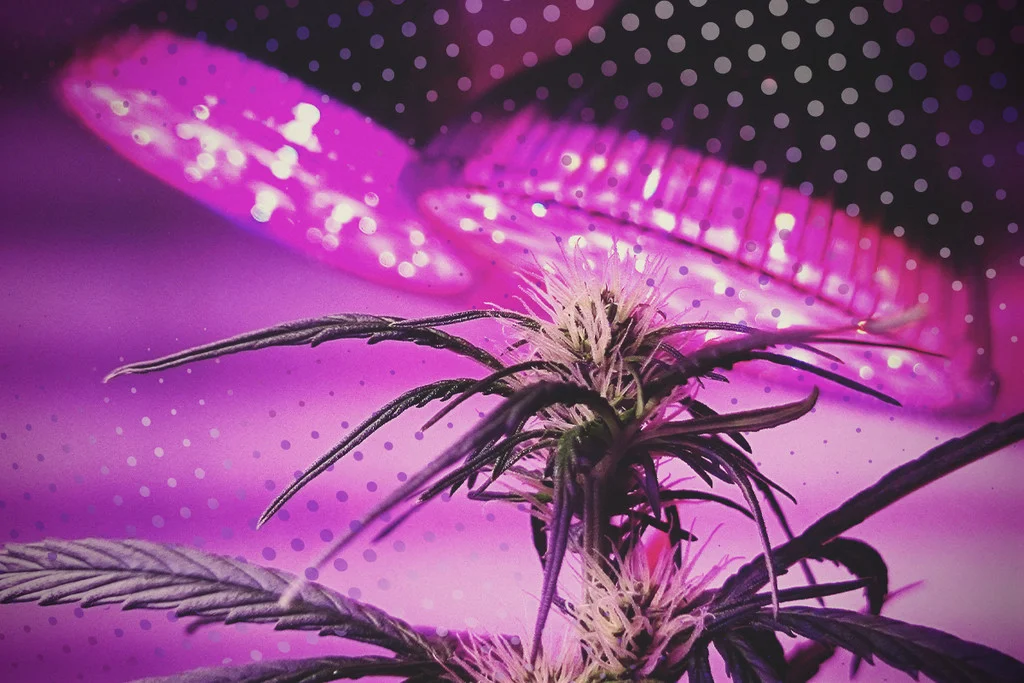Growing feminized cannabis seeds can be a rewarding experience, especially when you have mastered the nuances of the ideal growing conditions. Among the crucial factors for successful cultivation, lighting plays a pivotal role in the development of healthy, robust cannabis plants. In this guide, we’ll delve into the best lighting practices specifically tailored for feminized cannabis seeds, ensuring you can maximize your yield and potency.
The Critical Role of Lighting in Cannabis Cultivation
Lighting is not just about making sure your plants can photosynthesize. It’s about understanding how different light spectrums influence various growth stages of cannabis, from germination to flowering. For feminized seeds, which are specifically bred to eliminate male chromosomes and produce only female plants, the right lighting is even more crucial. These plants often require precise light conditions to ensure they develop the desired cannabinoid profiles and terpene levels.
In Canada, where cannabis cultivation has been legal since 2018, growers have the advantage of accessing a wide range of advanced lighting technologies. These technologies have been refined to suit the specific needs of cannabis, making it easier than ever to simulate the perfect conditions for growing feminized seeds.
Understanding Light Spectrum

Plants, including cannabis, respond to different wavelengths of light throughout their growth cycle. The light spectrum plays a vital role in regulating plant behaviors such as germination, vegetative growth, flowering, and more. For feminized cannabis seeds, certain spectrums are more beneficial at specific stages:
- Blue Light (400-500 nm): Crucial during the seedling phase, blue light promotes strong, healthy stems and leaves. It is particularly important for cannabis as it helps maintain tight internodal spacing, leading to more compact plants.
- Red Light (620-780 nm): As feminized cannabis plants enter the flowering stage, red light becomes imperative. It encourages flowering and plays a significant role in the development of buds.
Combining these lights in the right ratios can drastically improve the quality and quantity of your yield. Advanced LED grow lights often come with adjustable spectrum settings, allowing growers to tailor the light according to the plant’s phase.
Types of Grow Lights
When cultivating feminized cannabis seeds, selecting the right type of grow light can make all the difference. Here are the most common types:
- Fluorescent Lights: These are excellent for beginners and are particularly effective during the seedling stage. Compact Fluorescent Lamps (CFLs) and T5 fluorescent tubes provide a gentle light that helps young cannabis plants thrive without the risk of light burn.
- LED Lights: LED technology has revolutionized cannabis cultivation. These lights are highly energy-efficient, produce less heat, and can be programmed to emit precise light spectrums. For growers in Canada, LEDs are a popular choice due to their long lifespan and versatility.
- High-Intensity Discharge (HID) Lights: Including Metal Halide (MH) and High-Pressure Sodium (HPS) lamps, HID lights are powerful and highly effective for growing cannabis. MH lamps are great during the vegetative phase, while HPS lamps are preferred during flowering.
Each type of light has its benefits and drawbacks, and the choice largely depends on the scale of your grow operation, budget, and specific needs of your feminized cannabis seeds. In the next section, we will discuss how to set up these lights for optimal germination and growth, ensuring your feminized cannabis plants reach their full potential.
Read- Choosing Healthy Cannabis Seeds: A Guide to Successful Cultivation
Setting Up Your Grow Lights for Feminized Cannabis Seeds
Proper installation and management of grow lights are crucial for the health and productivity of feminized cannabis seeds. The initial setup can greatly influence the growth patterns and yield of your plants. Here’s a detailed look at how to optimize your lighting setup for the best results.
Lighting Setup for Germination
The germination and seedling stages are critical for the successful cultivation of feminized cannabis seeds. During this period, the seeds require a gentle yet effective light source to ensure strong and healthy initial growth.
- Light Intensity: Seedlings require less intense light. Position fluorescent lights or LEDs about 24-36 inches above the plants. This distance prevents light burn while providing enough intensity to support growth.
- Duration: Cannabis seedlings benefit from long light periods. A common practice is to keep the lights on for 18-24 hours per day. This simulates the long days of summer, encouraging vigorous growth.
Adjusting the light intensity and duration as your plants grow is vital. As they mature and enter the vegetative stage, they can tolerate and indeed require more intense light.
Light Cycles and Timing
Understanding and controlling the light cycles is essential, especially for feminized seeds, as it influences not just growth but also the flowering process.
- Vegetative Stage: Typically, a light cycle of 18 hours on and 6 hours off (18/6) is used during the vegetative stage. This cycle promotes healthy leaves and stems without speeding the plant toward flowering.
- Flowering Stage: To initiate flowering, the light cycle needs to change to 12 hours on and 12 hours off (12/12). This mimics the shorter days of autumn, signaling to the plants that it’s time to start producing flowers.
For growers in Canada, leveraging timers for your lights can automate these changes, ensuring precision and removing the possibility of human error, which can disrupt the plant’s growth cycle.
Troubleshooting Common Lighting Issues
Even with the best setup, issues can arise that may impact the health and productivity of your feminized cannabis plants:
- Leggy Seedlings: If your plants are stretching unusually towards the light, it often indicates that the light source is too far away. Bringing the lights closer can help reduce stretch and encourage a stockier, healthier plant.
- Light Burn: Conversely, if the leaves are discoloring or curling, it might mean the light is too close. Adjusting the light to a higher position can alleviate stress on the plants.
Advanced Tips for Maximizing Efficiency
Advanced growers can experiment with more sophisticated techniques to enhance their lighting efficiency:
- Moving Lights: Using adjustable light rigs that can be moved up or down can help maintain optimal distance as plants grow.
- Reflectors and Mylar: Installing reflective materials around your grow area can help maximize light efficiency by reflecting stray light back onto the plants.
Legal Considerations and Safety Tips for Grow Light Setup
Navigating the legal landscape and adhering to safety standards is essential when setting up grow lights for feminized cannabis seeds. In Canada, where cannabis cultivation is legal, it’s still important to be aware of both federal and provincial regulations that govern the growing of cannabis at home. Here’s what you need to know:
Legal Considerations
- Permit and Licenses: Ensure that you have the necessary permits for cannabis cultivation. While personal use cultivation is allowed, there are limits to the number of plants you can grow at home.
- Zoning Laws: Be aware of local zoning laws which might restrict the location and conditions under which you can grow cannabis.
- Compliance with Electrical Standards: Using high-intensity lights involves significant electrical load. Compliance with Canadian Electrical Standards is crucial to ensure that your setup is legal and safe.
These legal frameworks are designed to ensure that home cultivation does not adversely affect the community and is safe for all involved.
Safety Tips
- Electrical Safety: Ensure that all electrical installations are done by a qualified electrician. Overloaded circuits and poor wiring can lead to fires.
- Heat Management: Grow lights, especially HID types, generate a lot of heat. Adequate ventilation and heat management systems need to be in place to prevent overheating and reduce fire risk.
- Secure Installation: Securely mount all lights and fixtures to avoid accidental falls that could damage your plants or cause injuries.
Best Practices for a Sustainable Grow Light Setup
To ensure that your lighting setup is not only effective but also sustainable, consider the following best practices:
- Energy Efficiency: Opt for LED lights where possible. They use less energy and produce less heat compared to HID lights, making them both cost-effective and environmentally friendly.
- Timers and Automation: Use timers and automation systems to manage light cycles efficiently. This helps in reducing energy consumption and ensures that the plants receive the right amount of light at the right time.
- Regular Maintenance: Regularly check and maintain your lighting equipment to ensure optimal performance. Clean the lights and replace any faulty components as needed to maintain efficiency and safety.
Conclusion
Setting up the right lighting for feminized cannabis seeds involves understanding both the growth requirements of the cannabis plants and the legal and safety implications of using artificial lights. By choosing the appropriate lights, managing the light cycles correctly, and adhering to legal and safety norms, you can maximize your yield while minimizing risks. In Canada, where growers have the freedom to cultivate cannabis legally, it becomes especially important to stay informed and compliant. Remember, the goal is to create a sustainable, safe, and productive grow environment that respects both the law and the welfare of the community.
